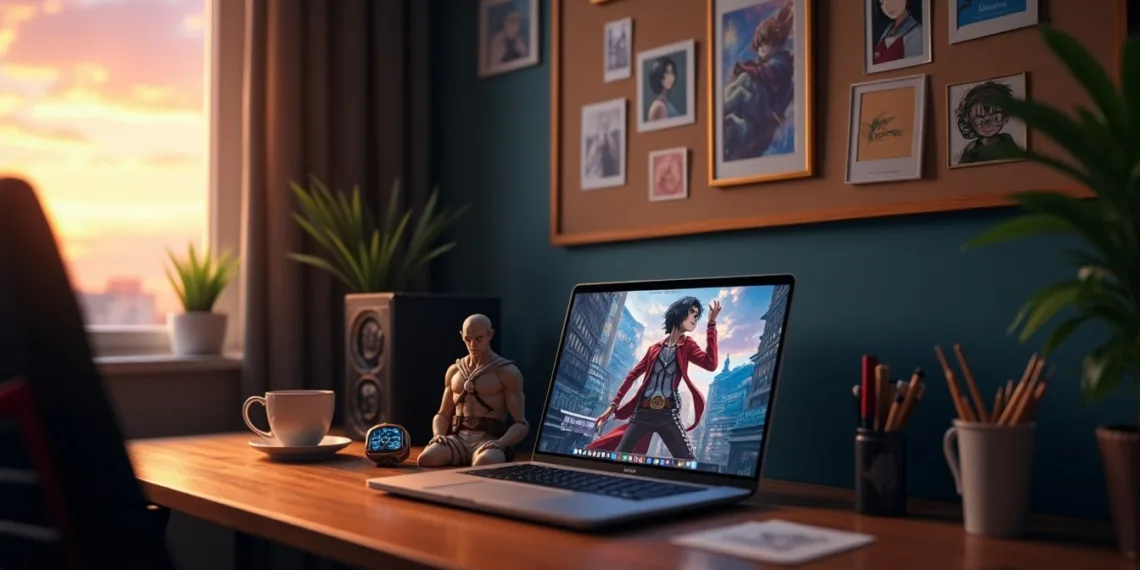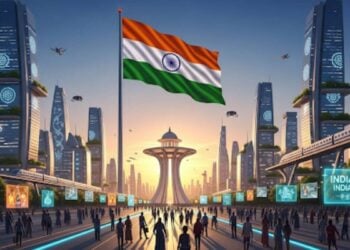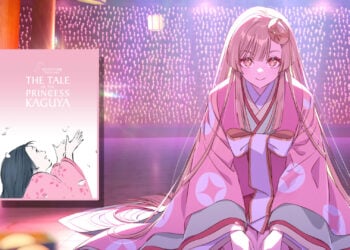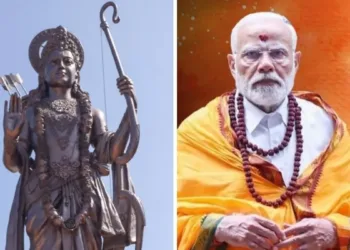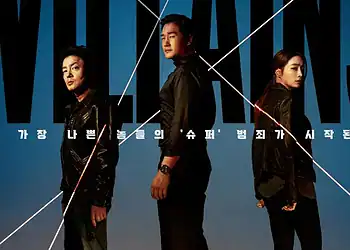Best Animes of All Time as of 2025: Want to know which is the best animes of all time? Demon Slayer stands as anime’s newest titan, amassing $10 billion revenue in just six years – matching entertainment giants like Sesame Street and Thomas the Tank Engine. The series exemplifies anime’s explosive growth from Japanese animation to global entertainment powerhouse.
Streaming platforms Netflix and Crunchyroll have opened doors to countless hidden gems, while established series keep shattering records. One Piece continues its remarkable run beyond 1000 episodes, Attack on Titan has cemented its place as an instant classic, and Neon Genesis Evangelion’s influence spans three decades. These masterpieces showcase how anime storytelling transcends cultural boundaries.
Ready to discover the absolute best of anime? This handpicked collection features 17 groundbreaking series that define animation excellence. Each title represents a masterwork of storytelling, artistry, and cultural significance that has earned legendary status in animation history.
Table of Contents
Attack on Titan: The Dystopian Masterpiece
“If you win, you live. If you lose, you die. If you don’t fight, you can’t win!” — Eren Yeager, Protagonist of Attack on Titan
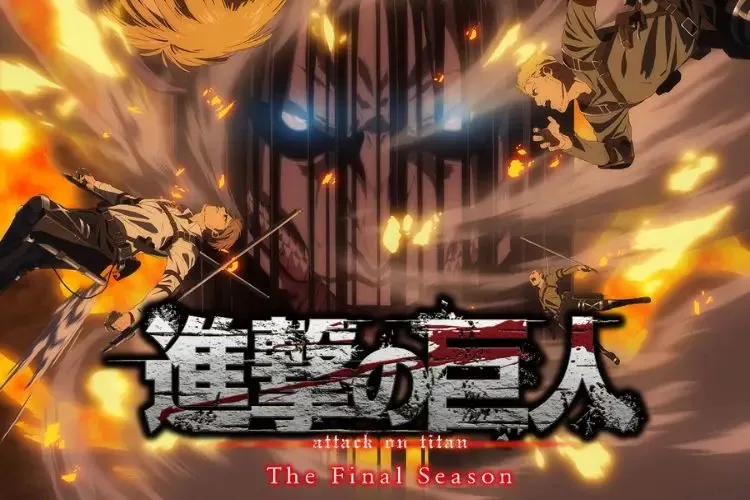
Image Source: Crunchyroll
Attack on Titan stands as dark fantasy’s crowning achievement since its 2013 debut. The series plunges viewers into a post-apocalyptic world where humanity cowers behind massive walls, desperately fighting for survival against mindless, flesh-eating giants.
Attack on Titan’s Revolutionary Animation Style
WIT Studio’s crisp animation mastery set unprecedented standards, blending traditional techniques with CGI in ways that previous anime only dreamed of achieving. MAPPA’s takeover for the final season brought raw intensity to the screen, embracing Hajime Isayama’s original manga style while adding hyper-realistic touches that perfectly matched the story’s descent into darkness. Their rotoscope animation breathed haunting life into every character movement.
Character Development and Plot Twists
Plot twists hit like thunderbolts throughout Attack on Titan, each revelation more shocking than the last. The series keeps viewers guessing – from Eren’s first titan transformation to the earth-shattering truth about titans being transformed humans. Even subtle moments carry explosive significance, like Eren’s seemingly innocent contact with Historia’s hand.
Impact on Western Anime Popularity
Attack on Titan shattered anime’s niche status in Western entertainment. The numbers tell the story – in 2021, the series generated nearly 60 times more demand than typical Netflix shows, claiming the crown as America’s most-wanted series. When the final season premiered, fan excitement literally crashed Crunchyroll’s servers.
Why Attack on Titan Deserves Its Acclaim
Beyond its pulse-pounding action, Attack on Titan tackles heavyweight themes of freedom, war, and human nature. Critics praise its bold sociopolitical commentary through historical allegories. The series boasts a stellar [96% score on Rotten Tomatoes](https://en.wikipedia.org/wiki/Attack_on_Titan_(TV_series), with reviewers hailing it as “a masterpiece of death and destruction.” Genre boundaries blur as fantasy, sci-fi, horror, and political drama collide in this landmark achievement.
Fullmetal Alchemist: Brotherhood
“Humankind cannot gain anything without first giving something in return. To obtain, something of equal value must be lost. That is alchemy’s first law of equivalent exchange.” — Alphonse Elric, Main character in Fullmetal Alchemist
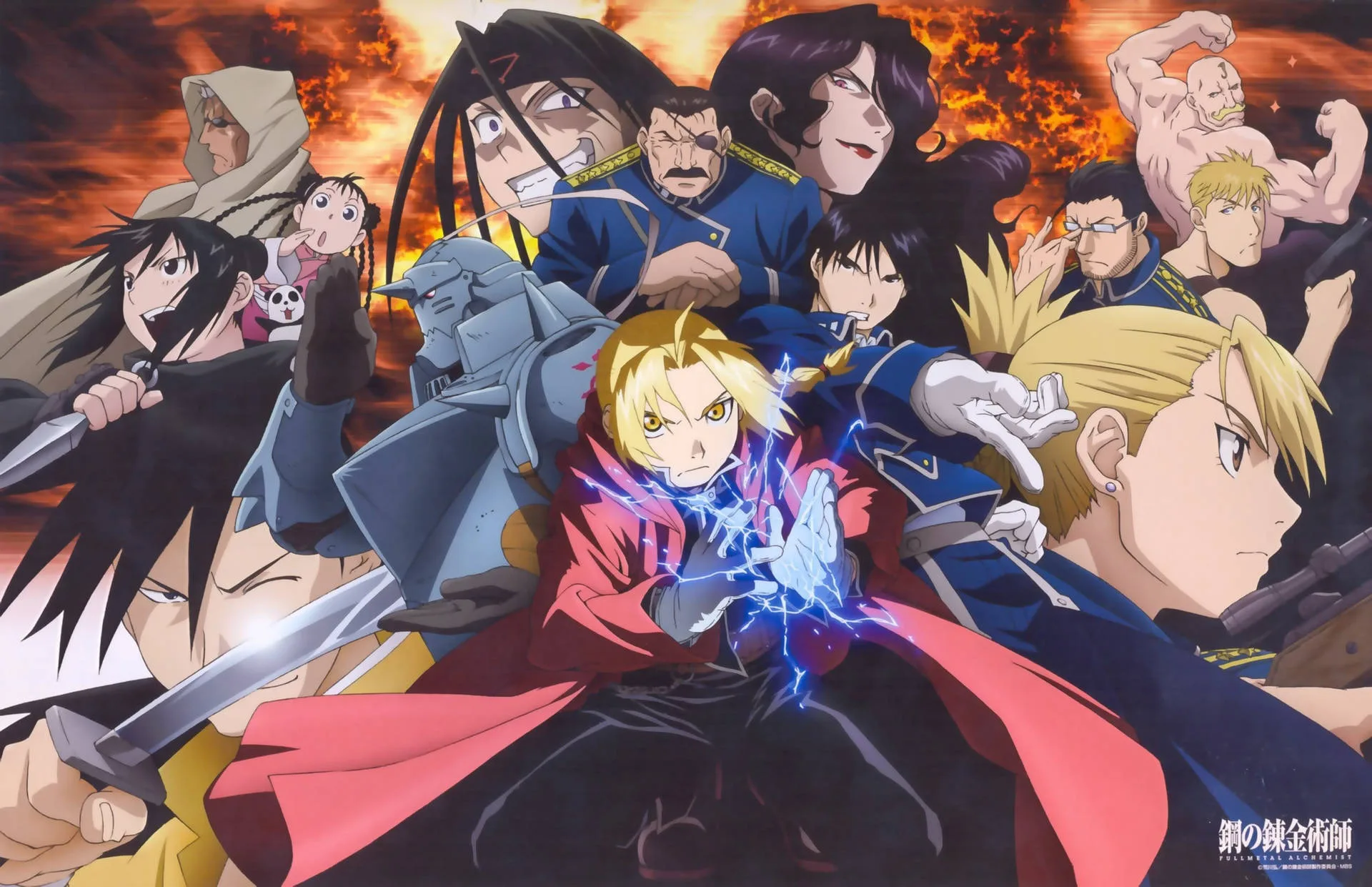
Image Source: Japan Powered
Fullmetal Alchemist: Brotherhood stands as anime’s crowning achievement, holding firm as MyAnimeList’s second highest-rated series of all time – recently yielding only to Frieren: Beyond Journey’s End. The 2009 masterpiece rewrote the rulebook for manga adaptations, proving perfect faithfulness to source material creates storytelling magic.
The Perfect Manga Adaptation
Brotherhood blazes past its 2003 predecessor by embracing every chapter of Hiromu Arakawa’s manga with unwavering dedication. Where the original series (2003-2004) charted its own path, Brotherhood (2009-2010) stayed true to the manga’s complete narrative. This steadfast commitment paid off spectacularly, crafting a story that grips both fresh viewers and devoted fans. The series even pulled off a remarkable feat – its finale aired exactly when the manga’s last chapter hit shelves, creating a once-in-a-lifetime synchronized ending across both formats.
Themes of Sacrifice and Redemption
“Equivalent Exchange” beats at Brotherhood’s heart – the unshakeable law that demands equal sacrifice for every gain. This principle threads through every story beat, from the Elric brothers’ tragic attempt at human transmutation to Father’s devastating downfall. The series tackles life’s heaviest questions – human nature, knowledge’s true cost, and science’s ethical boundaries. Each character’s path illuminates sacrifice’s true meaning, culminating when Edward trades his alchemy – the power he spent years mastering – to save his brother, proving some sacrifices transcend even equivalent exchange’s iron rules.
Character Arcs That Define Excellence
Brotherhood soars above typical anime through character development that sets industry standards. Even characters with minimal screen time leave lasting impressions, their brief moments carrying tremendous narrative weight. Edward Elric’s journey unfolds naturally, with animation subtly tracking his physical growth alongside his emotional evolution.
Alphonse’s story masterfully contrasts his intimidating steel exterior with his gentle soul, creating an unforgettable exploration of identity. Supporting players like Maes Hughes and Greed prove Brotherhood’s extraordinary ability to craft memorable characters whose fates grip viewers’ hearts long after watching.
Demon Slayer: Kimetsu no Yaiba
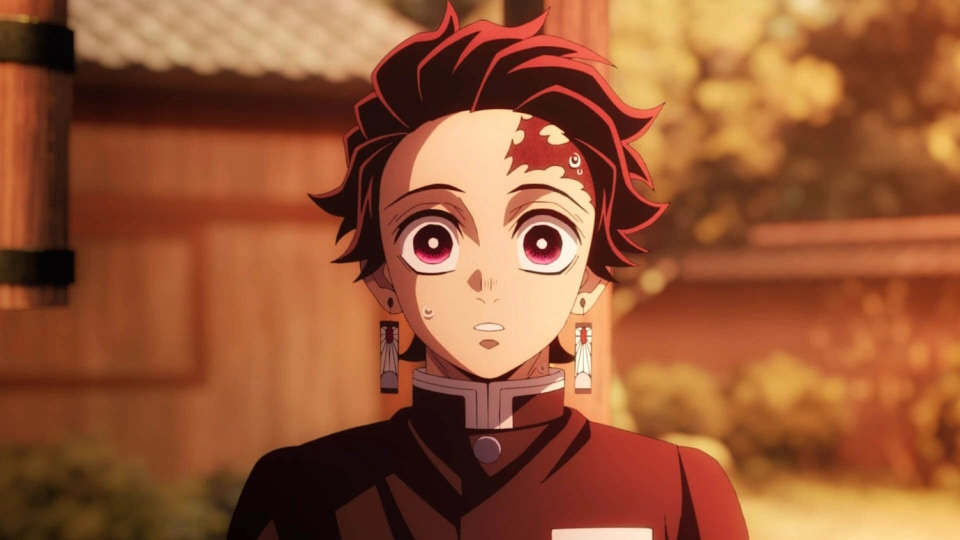
Image Source: demonslayer-anime.com
Demon Slayer burst onto screens in 2019, blazing past every expectation to become anime’s newest juggernaut. This dark fantasy tale transformed from humble manga origins into a record-shattering global sensation.
Ufotable’s Breathtaking Animation
Studio Ufotable pushes animation boundaries with Demon Slayer, setting new standards that leave viewers spellbound. Each frame sparkles with dynamic movement and vivid colors that turn combat into visual poetry. The Entertainment District Arc showcases animation quality rivaling Hollywood blockbusters. Here’s what makes Demon Slayer visually extraordinary:
- Crystal-clear action scenes that never lose focus, even at lightning speed
- Stunning environmental effects during Breathing Technique moments
- Perfect harmony between 2D characters and 3D backgrounds
Sword fights display remarkable precision, pulling viewers into every heart-pounding clash.
The Emotional Core Behind the Action
Demon Slayer packs an emotional punch that hits harder than any sword strike. Character backstories pierce hearts with raw intensity, forging deep bonds between viewers and heroes. Season 4’s Stone Hashira episode delivers gut-wrenching revelations that rival the series’ earliest emotional peaks.
Universal themes of family, sacrifice, and inner strength speak to audiences far beyond typical anime fans. Even demons carry tragic human histories that add layers of complexity to each confrontation. This perfect blend of spectacle and soul lifts Demon Slayer into anime’s highest ranks.
Cultural Impact and Record-Breaking Success
Demon Slayer shatters records with the force of Tanjiro’s strongest attack. The Mugen Train movie conquered global box offices, earning ¥69 billion (£411 million) to become Japan’s highest-grossing animated film ever. This masterpiece made history as the first non-Hollywood film to rule worldwide yearly earnings and claim the crown as animation’s highest-grossing R-rated feature.
America fell under the spell too – over $15 million in opening weekend earnings crowned it the biggest foreign language debut in U.S. history. The TV premiere drew 11.7 million households, marking the century’s most-watched anime broadcast.
One Piece: The Endless Adventure
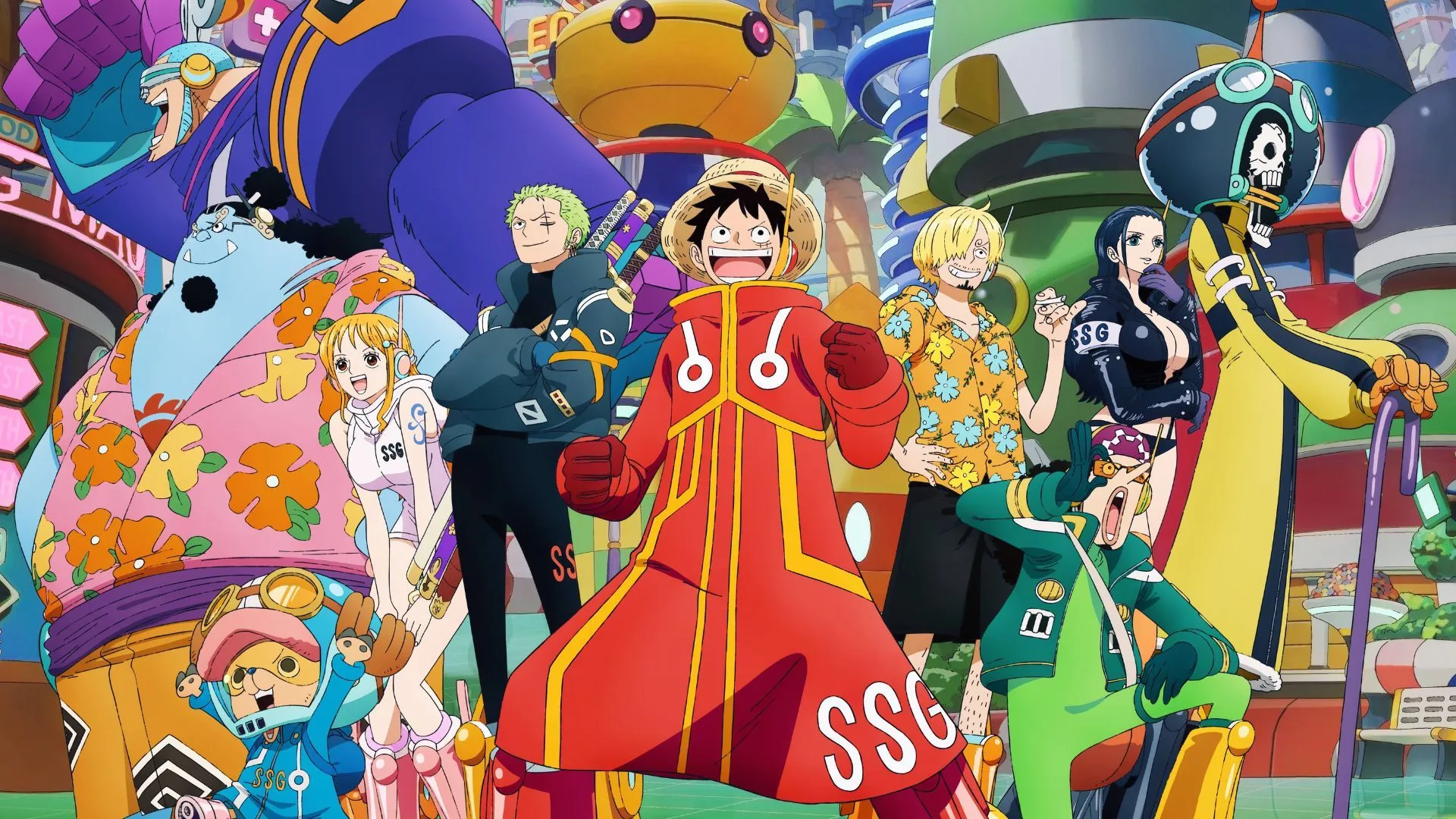
Image Source: one-piece.com
One Piece stands as anime’s greatest epic, sailing past 1,090 episodes since 1999. Eiichiro Oda’s masterwork charts Monkey D. Luffy’s grand quest to claim Gol D. Roger’s ultimate treasure and become King of the Pirates.
World-Building on an Unprecedented Scale
Oda crafts a universe so vast and alive it dwarfs typical anime settings. The Grand Line forms the story’s backbone – a treacherous sea path split into five distinct “seas,” each hiding its own wonders and dangers. From ice-locked islands to scorching desert kingdoms, every location sets the stage for fresh adventures. Each port brings new faces, rich cultures, and living histories that breathe authentic life into this sprawling world.
One Piece breaks new ground by letting its world grow naturally. Critics praise how “the world constantly progresses instead of remaining static, with or without the Straw Hats’ presence”.
Character Growth Across 1000+ Episodes
The series paints vivid character portraits across its epic canvas. Watch how:
- Heroes and villains evolve naturally through triumph and failure
- Personal journeys reveal how setbacks forge stronger identities
- Animation subtly tracks physical growth alongside emotional development
Even side characters bloom into unforgettable heroes. Take Karoo – starting as Vivi’s comedic companion before rising to true heroism, showing how the series’ length lets every character shine.
Why One Piece’s Longevity Matters
One Piece turns its marathon length into storytelling gold. Oda plants narrative seeds that sprout hundreds of episodes later, rewarding patient viewers. Each adventure adds another layer to the grand tapestry.
Fresh proof of the series’ enduring magic? One Piece just claimed 2024’s highest TV rating on IMDb with a stellar 9.0/10. This best anime series of all time proves that epic length serves epic storytelling.
Cowboy Bebop: The Genre-Defining Classic
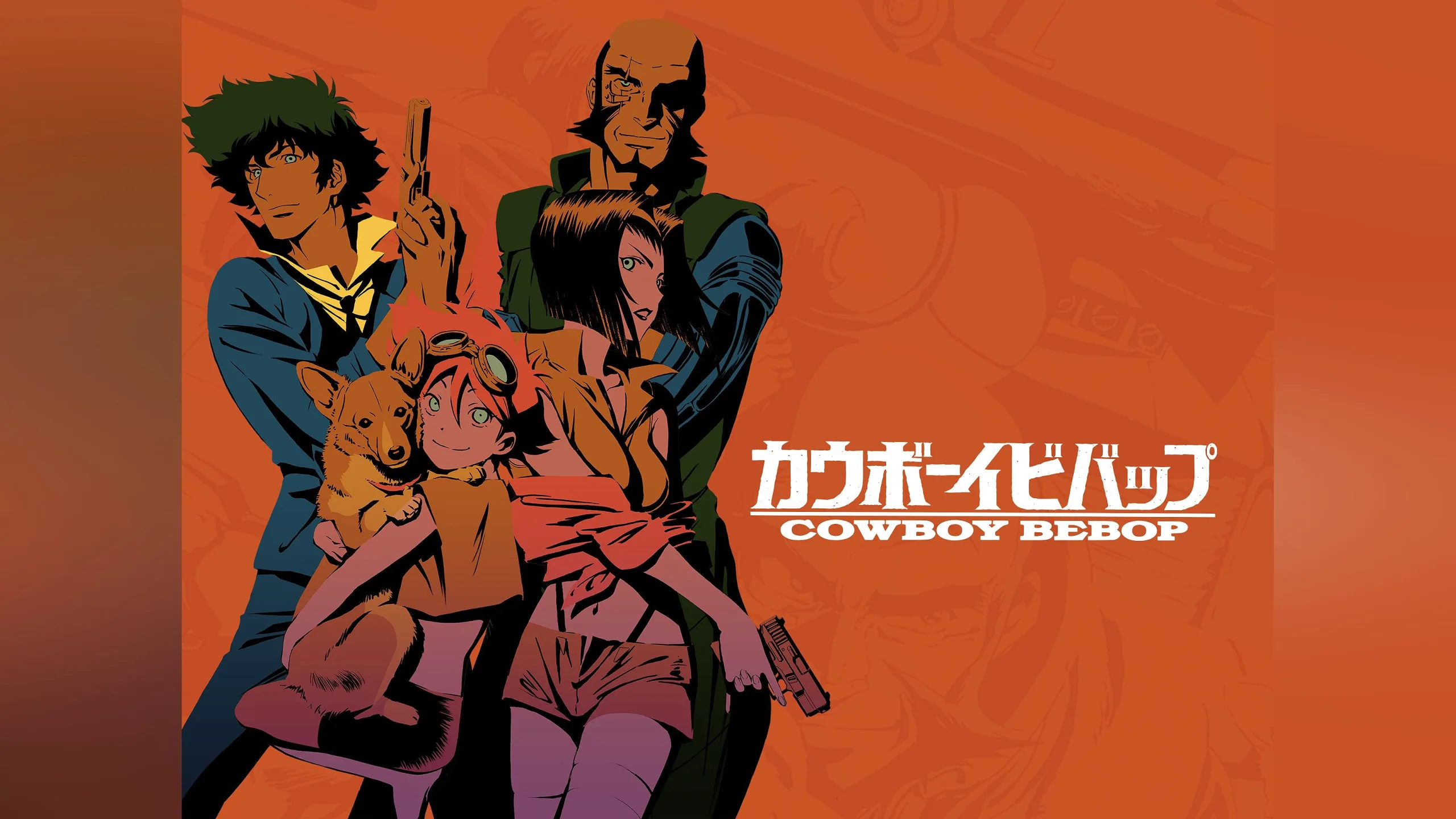
Cowboy Bebop blasted onto screens in 1998, creating what director Shinichirō Watanabe boldly called “a new genre unto itself”. This 26-episode masterpiece follows space-faring bounty hunters aboard the Bebop, chasing futures while running from their pasts.
Jazz-Infused Storytelling
Watanabe composed Cowboy Bebop like a jazz session – free-flowing, rule-breaking, guided by feeling over formula. This musical spirit flows through every frame, from scattered storylines to genre-bending adventures. Each episode plays like its own short film. The legendary soundtrack by Yoko Kanno and The Seatbelts doesn’t just accompany the action – it leads it. Music came before animation, creating what Watanabe describes as Kanno’s unique creative freedom: “she gets inspired on her own, follows up on her own imagery”.
Character Studies in Isolation
Cowboy Bebop digs deep into souls shaped by solitude. These characters don’t grow forward – they peel backward, revealing old wounds that explain present scars. One critic nailed it: “loneliness, redemption, and how they become intertwined through the Bebop crew” stand as the show’s beating heart. Watch these space cowboys form fleeting bonds while chains of history hold them back. Each revealed backstory illuminates another truth – why “Spike was carefree and acted on impulse, why Jet no matter what would always save the other members”.
Influence on Western Animation and Media
Cowboy Bebop kicked down anime’s cultural doors, becoming “one of the first anime where it was okay for you to say, ‘I love this'”. Adult Swim kept the series running for 12 straight years, introducing countless viewers to anime’s potential. Its creative DNA flows through everything from Joss Whedon’s Firefly to Marvel’s Guardians of the Galaxy, cementing its place among anime’s greatest achievements.
Death Note: The Psychological Thriller

Death Note stands as anime’s ultimate battle of minds. Tsugumi Ohba and Takeshi Obata’s masterwork presents a chilling premise – a notebook that kills anyone whose name is written within, provided the writer pictures their face.
The Cat-and-Mouse Game
Death Note pits two brilliant minds against each other – Light Yagami, a high school prodigy who discovers the deadly notebook, and L, the mysterious detective sworn to unmask him. Their psychological warfare forms the series’ beating heart, each move calculated to destroy the other. Critics call it “an epic battle of wits that’ll have you questioning who to root for.” The tension reaches fever pitch when Light joins the very task force hunting Kira – his secret identity. Watch both genius minds dissect each other’s every action while maintaining perfect masks of innocence.
Moral Ambiguity and Ethical Questions
Death Note tackles vigilante justice head-on, moving past simple moral ambiguity to reach shocking conclusions. Should any individual hold power over life and death, no matter how pure their goals? Even level-headed Matsuda voices the question haunting viewers: “Do you guys ever think that maybe Kira isn’t completely evil?” While the series lets us understand Light’s twisted crusade, his ultimate fall hammers home the truth – no ideology justifies playing god.
Visual Symbolism and Direction
Every frame of Death Note carries hidden meaning. Apples appear as symbols of forbidden knowledge, echoing humanity’s first taste of temptation. One stunning scene mirrors Michelangelo’s “The Creation of Adam” as Ryuk passes Light an apple, dripping with religious significance. Colors tell their own story – Light bathes in bloody reds during his kills while L glows in cool blues of reason and logic.
Neon Genesis Evangelion
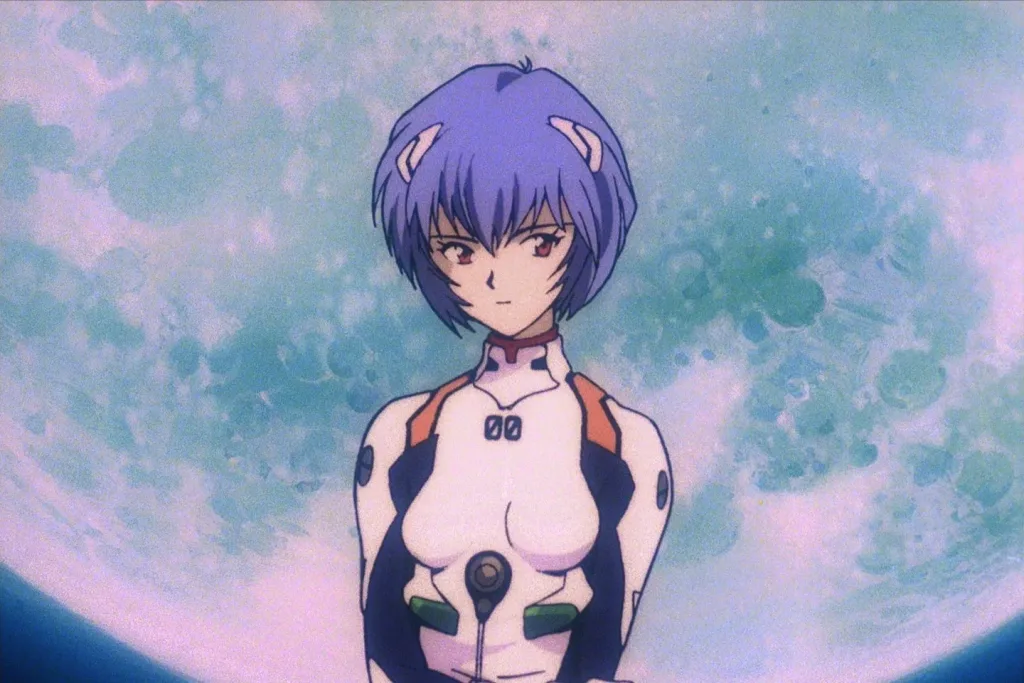
Image Source: Netflix
Neon Genesis Evangelion crashed through anime conventions in 1995, dragging viewers into a world of psychological trauma and existential dread. This masterpiece redefined storytelling possibilities in animation.
Deconstructing the Mecha Genre
Evangelion shatters typical giant robot fantasies. Where other shows glorify mechanical battles, this series exposes the brutal reality of forcing teenagers to pilot war machines. Young pilots develop PTSD and psychological scars that feel frighteningly real. The series stands as the first to condemn rather than celebrate the child soldier concept. This bold stance breathed new life into mecha storytelling during Japan’s economic crash of the 1990s.
Psychological Depth and Symbolism
Creator Hideaki Anno poured his battle with depression into every frame, splitting his psyche among the cast. Episode titles speak in Freudian tongue – “Oral Stage,” “Separation Anxiety” – marking the series’ psychological territory. Religious symbols from Kabbalah to Buddhism weave through the narrative, each one illuminating another facet of humanity’s endless search for meaning.
Cultural Impact and Legacy
Numbers tell part of the story – ¥33.75 billion earned in just two years. But Evangelion’s true impact runs deeper. Studios began trusting creators with shorter, higher-quality series. The franchise spawned everything from themed trains to convenience stores. Fans even launched a crowdfunding campaign to send a replica Spear of Longinus to the moon.
The Controversial Ending
Evangelion’s final episodes abandoned traditional plot for a deep dive into characters’ psyches, igniting fierce fan debate. The controversy birthed The End of Evangelion in 1997, offering an alternate yet conceptually aligned conclusion. Both endings, though radically different, probe the same eternal questions about human connection and self-acceptance.
Hunter x Hunter
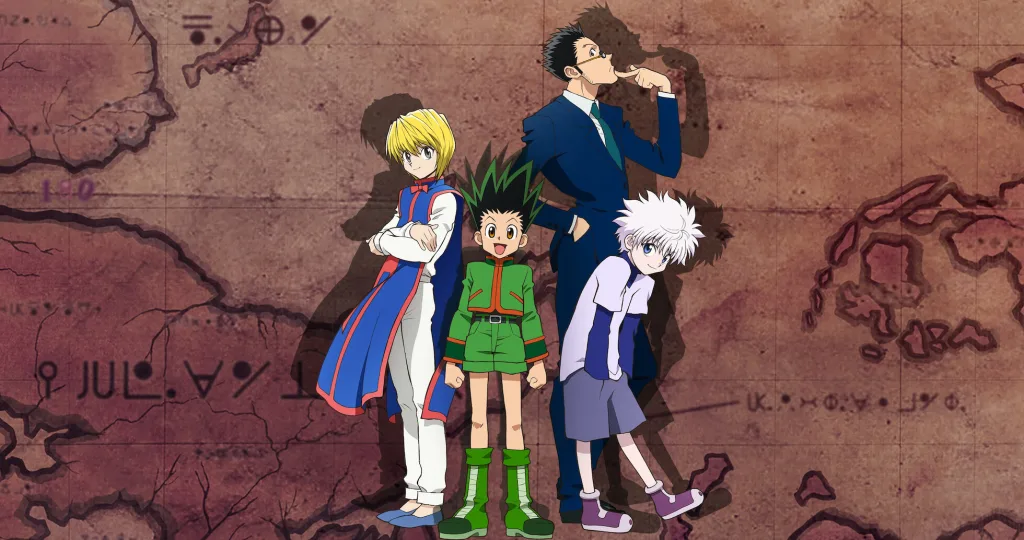
Image Source: VIZ
Hunter x Hunter blazes its own trail through anime history. Yoshihiro Togashi’s 1998 masterpiece reinvents shonen storytelling, following young Gon Freecss as he chases his father’s hunter legacy.
Togashi’s Subversion of Shonen Tropes
Traditional shonen rules shatter under Togashi’s pen. While Hunter x Hunter helped forge many genre standards, it delights in breaking them. Gon stumbles through battles, struggles with training, and faces mounting frustration at his weakness – a far cry from typical ever-triumphant heroes. Major arcs dodge expected endings: the Chimera Ant’s main villain never faces Gon, and our heroes taste bitter defeat against Knuckle and Shoot instead of claiming victory.
Complex Power Systems and Strategy
Nen powers this series’ brilliant core – anime’s most perfectly balanced power system. Six categories shape this life energy:
- Enhancement, Emission, Manipulation
- Transmutation, Conjuration, Specialization
Nen’s genius lies in its crystal-clear limits. Natural affinities restrict what users can learn, creating genuine boundaries. Sure, mastering these rules demands viewer attention, but it prevents cheap power-up victories. Even Meruem, the series’ mightiest fighter, dominates through Nen basics rather than special tricks.
Character Development Beyond Typical Shonen
Gon’s journey defies prediction at every turn. His child-like moral code baffles friend and foe alike – embracing supposed villains while erupting in rage at those who cross his unique lines. Killua’s arc proves even more compelling, rising from self-loathing assassin to self-assured warrior by literally pulling out Illumi’s controlling needle. This raw psychological truth, rather than predictable power scaling, marks Hunter x Hunter as anime storytelling at its peak.
Jujutsu Kaisen
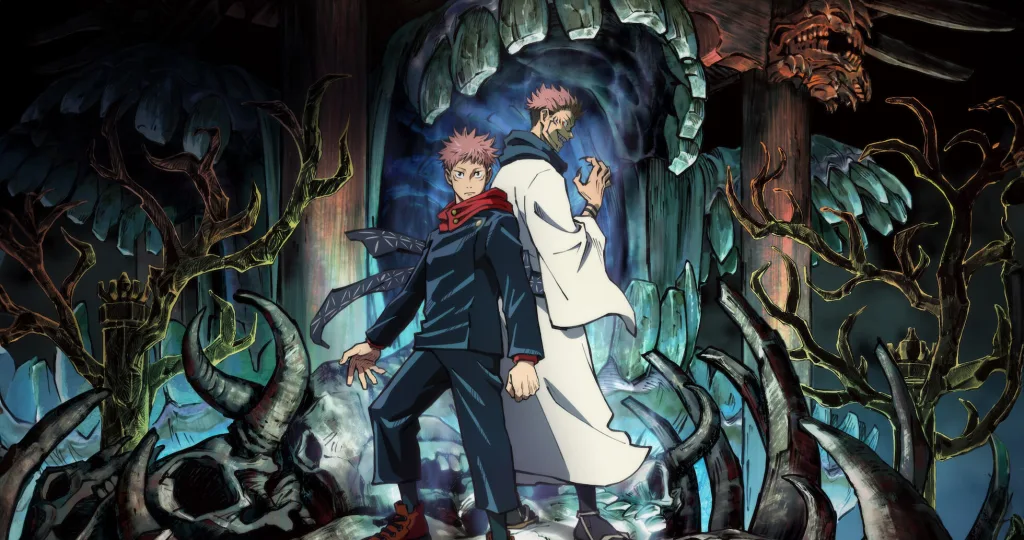
Image Source: Hulu
Jujutsu Kaisen claims the crown as 2023’s most in-demand animated TV show, toppling Attack on Titan with viewer demand 71.2 times above average TV shows. The series earns its throne through stunning animation and masterful storytelling.
MAPPA’s Fluid Action Sequences
Studio MAPPA pushes animation boundaries with every Jujutsu Kaisen episode. Director Sunghoo Park tackled the challenge of bringing “Domain Expansion” to life, working closely with creator Gege Akutami to perfect each scene. MAPPA’s artistry shines through:
- Fluid combat that dances between darkness and dazzling light
- Sharp character outlines cutting through intense effect lighting
- Brush stroke techniques that conjure complex battle sequences
These stunning visuals earned back-to-back “Best Action” titles at the Crunchyroll Awards.
Modern Shonen Excellence
Jujutsu Kaisen breaks shonen rules to forge something fresh. Teamwork replaces tired rivalry tropes. The cursed energy system taps into rage and sorrow, pushing heroes to embrace their shadows. Powerful women like Nobara and Maki step beyond typical supporting roles into the spotlight.
Character Dynamics and Humor
Dark fantasy meets sharp wit in Jujutsu Kaisen’s unique voice. Characters grow through Akutami’s signature blend of “big laughs,” “repetition,” and “expectation vs. reality”. Gojo’s playful charm masks godlike power, while Yuji’s self-mocking humor lightens grim moments. This perfect mix of laughs and frights speaks directly to modern viewers—no surprise Gen Z makes up 71.3% of fans.
Steins;Gate
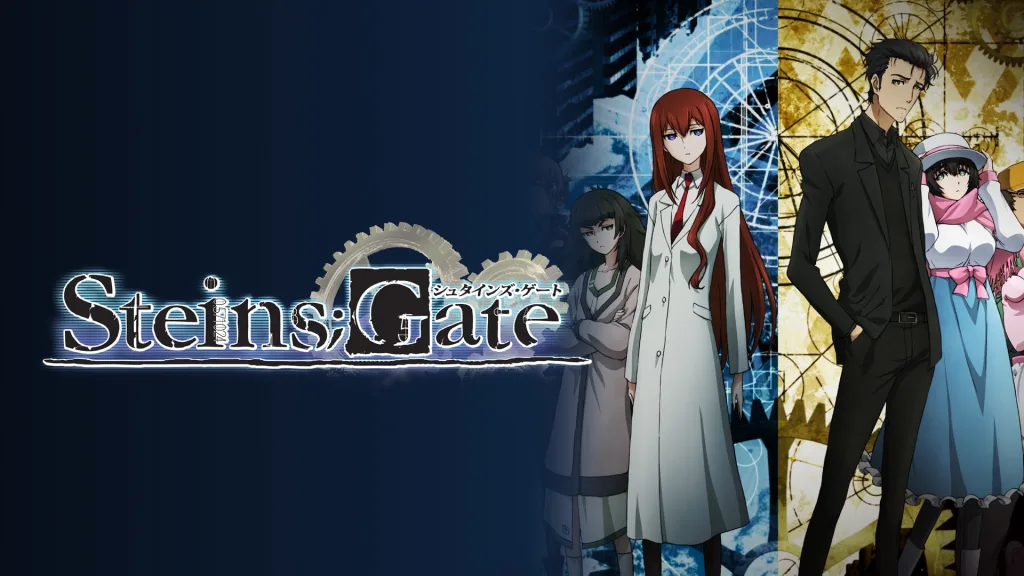
Image Source: Vamers
Time bends to scientific precision in Steins;Gate. This masterpiece elevates sci-fi storytelling through meticulous attention to physics and raw emotional depth, earning permanent residence among top-10 anime rankings worldwide.
Time Travel Done Right
Want to see time travel that respects science? Steins;Gate builds its foundation on Kerr Black Holes theory, turning theoretical physics into riveting drama. Unlike shows that wave away scientific accuracy, this series places real quantum mechanics at its heart. “World lines” – parallel realities with subtle differences – spring from Many-Worlds theory, creating a universe where every choice spawns logical consequences. No cheap paradoxes here – only one world line exists at once, while Okabe’s “Reading Steiner” lets him carry memories across timeline shifts.
Character Development Through Timelines
Watch Rintaro Okabe’s mask crack as time manipulation exacts its toll. His bombastic “Hououin Kyouma” persona crumbles against harsh reality. Meanwhile, sparks fly between Okabe and Kurisu, their initial hostility melting into deep connection as they navigate multiple timelines together. Critics nail it: “Rintaro is both the cause and solution for most mistakes made throughout the series” – a journey that mirrors viewers’ growing grasp of the show’s intricate web.
Scientific Concepts and Execution
Steins;Gate soars above typical sci-fi through rock-solid science:
- Butterfly Effect theory sends ripples through time
- Many-Worlds theory splits reality at every choice
- Kerr Black Hole theory opens doors between timelines
Yet science serves story, never overshadows it. “D-mail” messages follow strict rules – including a 36-byte size restriction – keeping supernatural elements grounded in logic. The finale dances with bootstrap paradox while finding an elegant escape route to a satisfying end.
Vinland Saga
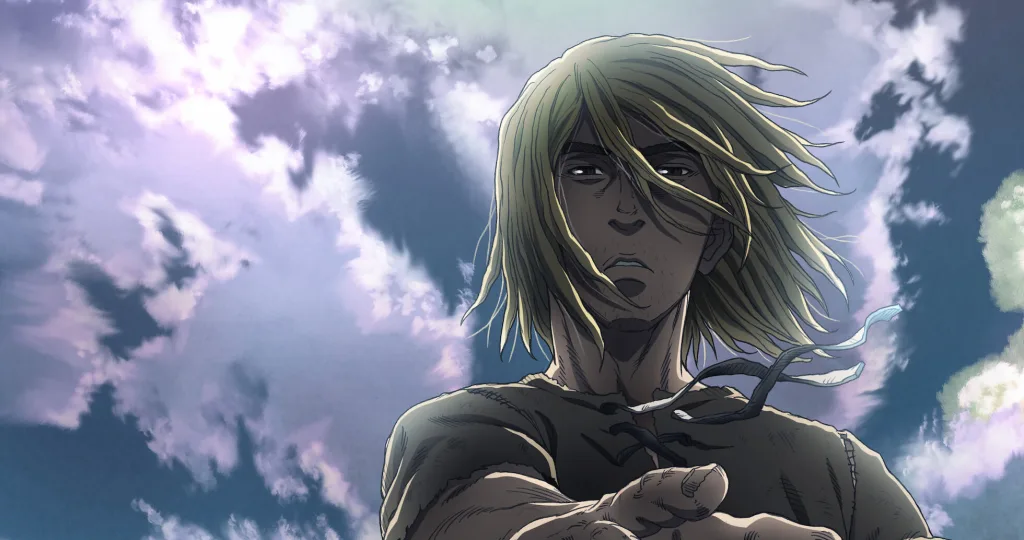
Image Source: MyAnimeList
Vinland Saga sails beyond typical anime waters. This masterpiece weaves historical truth with philosophical depth, drawing from authentic 13th-century Icelandic sagas of Norse exploration. Viking-era authenticity breathes through every frame, while rich character development steers the narrative.
Historical Accuracy and Brutal Realism
Blood and steel clash with historical precision in Vinland Saga. Real battles spring to life – from Hjörungavágr’s chaos to England’s Danish invasion. Historical giants walk among fictional heroes – Thorfinn Karlsefni, Thorkell the Tall, and King Canute himself shape the story’s course. Viking culture pulses through every scene, while creative touches enhance rather than distort truth. War’s true face emerges raw and terrible, stripped of glory’s usual mask. Vinland itself, discovered by Leif Erikson near 1000 AD, beckons as both historical landmark and symbol of hope.
Thorfinn’s Journey from Revenge to Peace
Thorfinn’s transformation anchors Vinland Saga’s philosophical soul. His father’s murder sparks eleven years of vengeance-hunting, only to see his target fall to another’s blade. Through slavery’s crucible and Einar’s friendship, Thorfinn’s spirit transforms. His ultimate declaration – “I have no enemies” – rings as the series’ defining moment, according to Polygon. This bold arc dares to champion peace in a world drunk on violence.
Visual Direction and Combat Choreography
Steel sings through fluid animation as battles unfold with brutal grace. Director Yabuta conquered the challenge of bringing Viking ships to life in 3D CGI. Every facial twitch tells Thorfinn’s story, tracking his psychological journey across years of struggle. Critics praise the “stunning artwork” and “amazing action scenes” that lift Vinland Saga into anime’s pantheon of greatness.
Monster
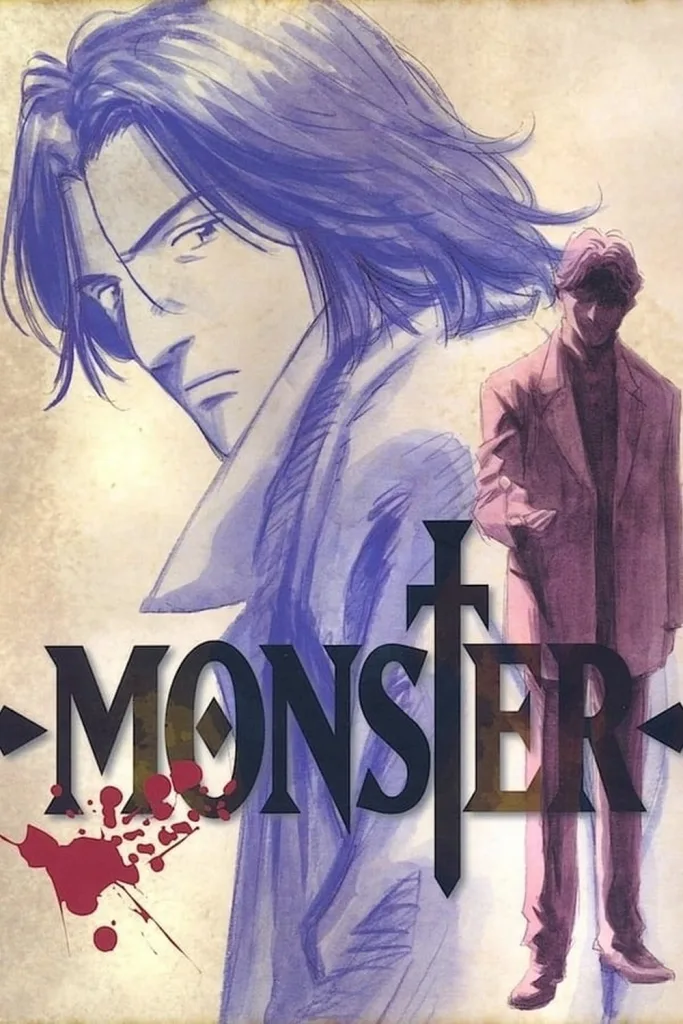
Image Source: Tiki-Toki
Naoki Urasawa’s Monster haunts the landscape of anime storytelling. This 1994-2001 masterwork strips away conventional anime tropes, following Dr. Kenzo Tenma’s desperate hunt for Johan Liebert – perhaps fiction’s most terrifying serial killer.
Psychological Horror at Its Finest
Fear lurks in everyday shadows throughout Monster. No ghosts or gore needed – true horror lives in Johan’s gentle smile, a monster wearing human skin. His mere presence chills viewers’ blood without a drop of violence shown. Across 74 razor-sharp episodes, tension never slacks, never wastes a moment. Each revelation builds like a whispered nightmare, perfectly paced to maximize dread.
Urasawa’s Character-Driven Narrative
Monster shatters the mold through Urasawa’s revolutionary character work. Side characters breathe as deeply as protagonists, their seemingly separate stories weaving an intricate web. Watch closely – every thread leads back to Johan’s master design. Each character, no matter how brief their role, carries enough emotional weight to break your heart.
Exploration of Human Nature
Dark questions about humanity’s core echo through Monster’s halls. The 511 Kinderheim orphanage stands as a monument to horror – where children become emotionless weapons. Characters like Grimmer twist expectations, suffering more from feeling nothing than from actual pain. The series forces viewers to grapple with impossible choices – do all lives truly hold equal worth? Can murder ever serve justice, even against pure evil?
Your Name (Kimi no Na wa)
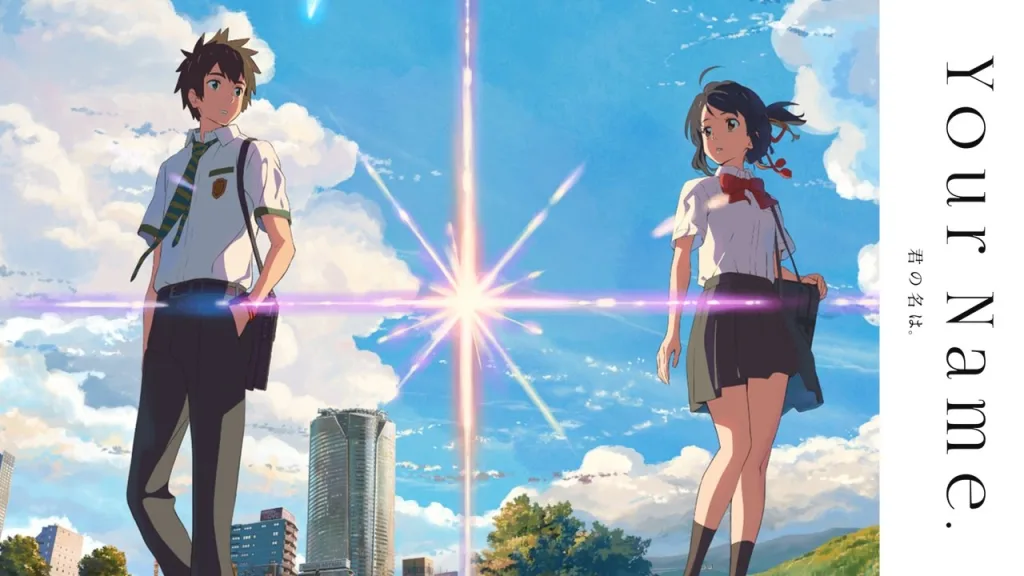
Image Source: Netflix
Makoto Shinkai’s Your Name soars beyond simple body-swapping tales. The 2016 masterpiece weaves an emotional tapestry that captured hearts worldwide, earning its place among anime’s greatest achievements.
Makoto Shinkai’s Visual Masterpiece
Your Name paints poetry on screen through Shinkai’s signature style. His background as a graphic designer and self-taught animator shines in every frame, blending hyper-realistic backgrounds with delicate hand-painted characters. A revolutionary CG process adds stunning environmental detail while preserving traditional animation’s soul. Tokyo’s steel canyons contrast breathtakingly with rural Japan’s natural splendor, letting viewers “rediscover how beautiful Japan really is”. The “kataware-doki” twilight scenes glow with colors that mirror the story’s themes of separation and connection.
Emotional Storytelling Through Time and Space
Body-switching comedy transforms into cosmic romance when a devastating comet tears our protagonists across time itself. This masterful narrative triggers what neuroscientists recognize as storytelling’s chemical magic – flooding viewers’ brains with oxytocin and dopamine through deeply meaningful connections. Japanese audiences particularly resonate with themes of fate and destined meetings, while universal questions about “searching for something more” speak to hearts worldwide.
Cultural Impact and Box Office Success
Numbers tell an impressive story – ¥25.17 billion in Japanese box office alone, second only to Spirited Away. The film conquered new territories, becoming the highest-grossing Japanese film in China and ruling global anime box office rankings until 2020. Real Japan felt the “Your Name” effect too – fans flocked to Tokyo filming locations and rural Gifu Prefecture on special tours, bringing unexpected economic boosts to these regions.
Mob Psycho 100
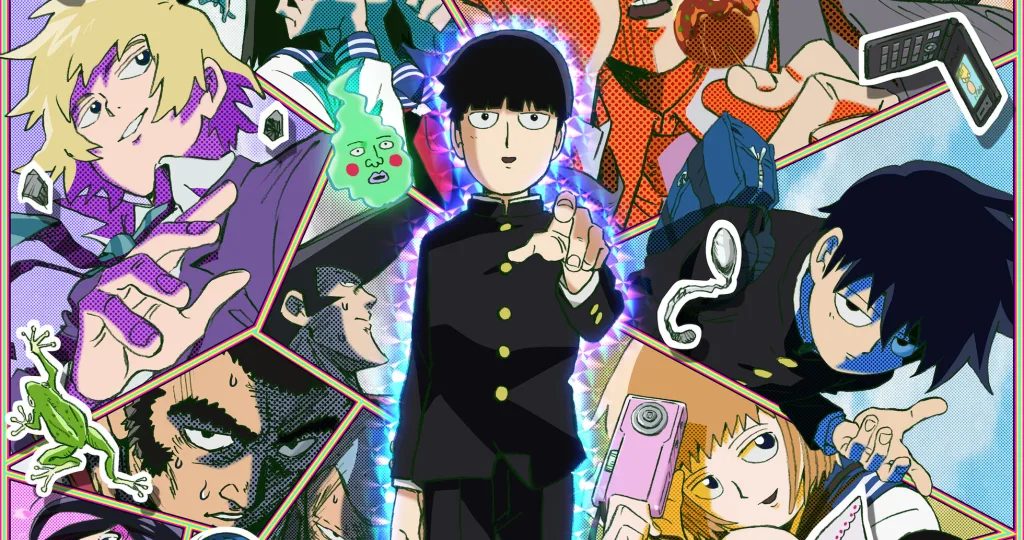
Image Source: Netflix
Studio Bones breaks animation rules with Mob Psycho 100. Rather than smoothing ONE’s rough sketches, they embrace the crude lines to create something extraordinary – proving sometimes the best path forward means honoring your roots.
ONE’s Unique Art Style Brought to Life
Studio Bones dared to be different. Where other studios polish rough manga art into standard anime shine, they preserved ONE’s raw character designs . This bold choice unleashed creative freedom throughout the series . Simple character designs let animators push emotional expressions to wild extremes . The result? A show that keeps its manga soul while soaring to new animation heights .
Character Growth and Self-Acceptance
Shigeo “Mob” Kageyama turns typical protagonist tropes upside down. Here’s a psychic powerhouse who couldn’t care less about his supernatural gifts . His story centers on something far more challenging – growing as a human being . Watch this emotionless vessel discover real feelings, real connections, real strength . The Body Improvement Club teaches Mob more about power than any psychic training – true strength grows from character, not ability .
Action Sequences and Animation Quality
Three seasons showcase animation mastery that keeps raising its own bar. Paint-on-glass techniques by Tokyo University of Arts graduates create mind-bending battle sequences . Each psychic clash carries emotional weight that matters more than power levels . Neon colors explode across the screen in psychedelic displays that perfectly match the supernatural action . Even quiet moments shine with movie-quality polish – just watch Season 2 Episode 4 or Season 3 Episode 6 for proof .
Violet Evergarden

Image Source: www.kyotoanimation.co.jp
Violet Evergarden breaks hearts to heal them. Kyoto Animation’s 2018 masterpiece follows a former child soldier learning humanity’s language through others’ letters. As an “Auto Memory Doll,” she helps people express feelings she’s never known herself.
Kyoto Animation’s Visual Splendor
Beauty blooms in every frame of Violet Evergarden. Watch mechanical fingers dance across typewriter keys with clockwork precision, each movement a small miracle of animation. One month of crafting yields just 24 minutes of footage, yet these dreamlike visuals earned the 2021 Japan Academy Award. Even background characters shine with unique designs rather than copy-paste shortcuts. Kyoto Animation pours time and talent into every detail, cost and schedule be damned.
Emotional Storytelling and Character Development
“I love you” – three words Violet can’t understand, spoken by her dying commander. These words drive her quest from emotionless tool to fully realized human. Each letter she writes for clients adds another piece to her emotional puzzle. The series peaks when Violet – who never shed a tear while others wept – finally breaks down crying, marking her journey from soldier to soul.
Themes of War, Loss, and Healing
Violet Evergarden looks post-traumatic stress in the eye without flinching. PTSD’s shadows lurk in every corner – hypervigilance, haunting memories, emotional numbness, crushing guilt. Yet this isn’t another war glory story. Through Violet’s healing journey, connecting with others’ pain and joy, the series reveals war’s true cost to survivors and society. Here lies Violet Evergarden’s greatest triumph – turning a war story into a symphony of healing and human bonds.
Berserk (1997)
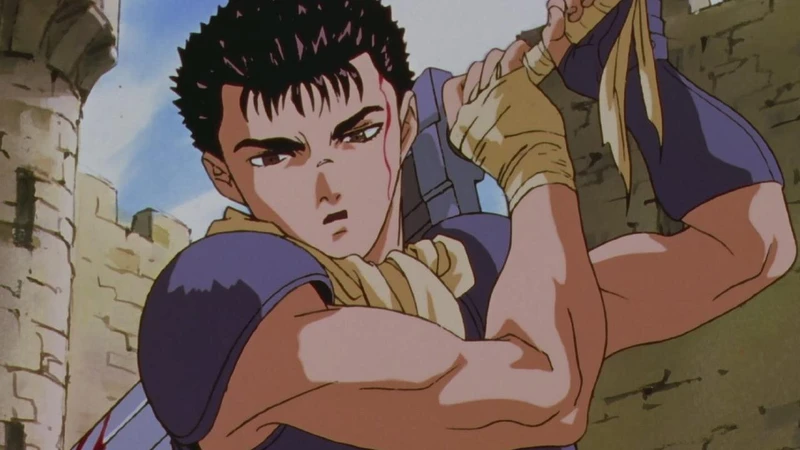
Image Source: Yahoo
Medieval darkness breathes through every frame of Berserk. Kentaro Miura’s masterwork found perfect form in this legendary 1997 adaptation, haunting viewers decades later. These 25 episodes capture the Golden Age arc’s brutal heart – the fateful bond between Guts, a lone mercenary, and Griffith, the Band of the Hawk’s charismatic leader.
Dark Fantasy Perfection
Berserk wrote the rules of dark fantasy storytelling. The 1997 series honors its manga roots with semi-realistic art and unrelenting grit that defined the genre. Hand-drawn castles and towns spring from medieval paintings, while sword-and-sorcery elements dance with shadows. No brutality gets softened – the anime faces every bloody moment from the manga with unflinching courage.
Themes of Ambition and Betrayal
Unbridled ambition drives Berserk’s tragic heart. Watch Griffith’s kingdom-hunger lead straight to the Eclipse – anime’s most infamous betrayal. Despair breaks him, the Behelit calls the God Hand, and his companions become sacrifices to his power-lust. His transformation into Femto, the God Hand’s fifth member, and Casca’s violation mark his final fall from grace. Like ancient Greek tragedy, pride births monsters both literal and metaphorical.
Influence on Dark Fantasy Media
Berserk’s shadow looms over modern media. Hidetaka Miyazaki’s “Soulsborne” games bow to its influence – just compare Dark Souls 3’s Slave Knight Gael to Guts’ Berserker Armor. Its DNA runs through Castlevania, Devil May Cry, Chainsaw Man, Attack on Titan, and Final Fantasy. Even Netflix’s Castlevania pays direct homage, proving Berserk’s power endures.
Samurai Champloo

Image Source: Crunchyroll
Samurai Champloo cuts its own path through anime history. Director Shinichirō Watanabe’s 2004 masterpiece blends impossible flavors – ancient samurai drama and modern hip-hop swagger – into something entirely new.
Watanabe’s Fusion of Hip-Hop and Edo Japan
Watanabe’s genius lies in spotting hidden connections. His love for hip-hop since high school let him see parallels between samurai honor codes and hip-hop’s quest for authentic identity. This wild mix birthed what he calls “a unique genre unto itself.” Four hip-hop legends – Nujabes, Fat Jon, Tsutchie, and Force of Nature – forged the perfect soundtrack. “Battlecry” opens each episode with Nujabes and Shing02’s raw energy, while “Shiki no Uta” closes with soulful reflection.
Character Journeys and Episodic Excellence
Three souls chase destiny across Japan – Mugen the wild-style vagrant, Jin the ice-cold ronin, and Fuu, hunting “the samurai who smells of sunflowers.” Each episode stands alone like a perfect short story, building subtle threads toward the final arc. Our heroes face everything – yakuza thugs, hidden Christians, zombie outbreaks, even baseball games. Every adventure peels back another layer of friendship, purpose, and growth.
Stylistic Animation and Fight Choreography
Steel meets style in Samurai Champloo’s groundbreaking battles. Mugen’s blade work flows like breakdancing, pure hip-hop energy in motion. Jin answers with laser-focused traditional forms. Director Nakazawa kept Jin’s style deliberately unpredictable, drawing from modern combat sports instead of typical samurai moves. The animation team studied gymnasts to nail Mugen’s impossible moves, creating sequences that still drop jaws twenty years later. This perfect blend of tradition and innovation makes Samurai Champloo a true anime classic.
Comparison Table
| Anime Title | Year | Studio/Production | Key Themes | Notable Achievements/Impact | Genre/Category |
|---|---|---|---|---|---|
| Attack on Titan | 2013 | WIT Studio/MAPPA | Freedom, war, human nature | 96% Rotten Tomatoes score; Crashed Crunchyroll servers | Dark Fantasy |
| Fullmetal Alchemist: Brotherhood | 2009-2010 | Not mentioned | Equivalent exchange, sacrifice, redemption | Second highest-rated anime on MyAnimeList | Action/Adventure |
| Demon Slayer | 2019 | Ufotable | Protection, sacrifice, determination | Generated $10 billion in 6 years; Highest-grossing R-rated animated film | Action/Fantasy |
| One Piece | 1999-present | Not mentioned | Adventure, friendship, world-building | 1,090+ episodes; Highest-rated TV show 2024 (9.0 IMDb) | Adventure |
| Cowboy Bebop | 1998 | Not mentioned | Loneliness, redemption, isolation | Aired on Adult Swim for 12+ years; Genre-defining influence | Space Western |
| Death Note | Not mentioned | Not mentioned | Moral ambiguity, justice, power | Not mentioned | Psychological Thriller |
| Neon Genesis Evangelion | 1995 | Not mentioned | Psychological trauma, existential dread | Generated ¥33.75 billion in two years | Mecha/Psychological |
| Hunter x Hunter | 1998 | Not mentioned | Power systems, strategy, subverted tropes | Created innovative power system (Nen) | Action/Adventure |
| Jujutsu Kaisen | Not mentioned | MAPPA | Teamwork, cursed energy, modern shonen | World’s most in-demand animated show 2023 | Action/Fantasy |
| Steins;Gate | Not mentioned | Not mentioned | Time travel, scientific accuracy, consequences | Consistently top-10 ranked across platforms | Sci-fi/Thriller |
| Vinland Saga | Not mentioned | Not mentioned | Historical accuracy, pacifism, redemption | Praised for authentic Viking-era portrayal | Historical Drama |
| Monster | 1994-2001 | Not mentioned | Psychology, morality, human nature | 74 episodes of psychological suspense | Psychological Thriller |
| Your Name | 2016 | Not mentioned | Fate, connection, time | Second highest-grossing domestic film in Japan | Romance/Fantasy |
| Mob Psycho 100 | Not mentioned | Studio Bones | Self-improvement, power, acceptance | Unique preservation of ONE’s art style | Action/Comedy |
| Violet Evergarden | 2018 | Kyoto Animation | PTSD, healing, emotional growth | 2021 Japan Academy Award winner | Drama |
| Berserk (1997) | 1997 | Not mentioned | Ambition, betrayal, dark fantasy | Major influence on dark fantasy media | Dark Fantasy |
| Samurai Champloo | 2004-2005 | Not mentioned | Cultural fusion, friendship, purpose | Innovative blend of hip-hop and Edo period | Action/Adventure |
Conclusion
Seventeen titans of anime stand before us, charting the medium’s rise from Japanese curiosity to global cultural force. Each series carves its own path to greatness – Demon Slayer shatters box office records, Attack on Titan weaves complex narrative tapestries, while Cowboy Bebop dances between genres with effortless grace.
Today’s animation studios push boundaries while honoring artistic souls. Watch how Ufotable’s Demon Slayer sequences flow like liquid light, or how MAPPA makes Jujutsu Kaisen combat sing with fluid precision. Yet timeless storytelling needs no modern polish – Neon Genesis Evangelion and Monster still grip viewers’ hearts decades after release.
These masterworks speak universal truths through unique cultural voices. Fullmetal Alchemist: Brotherhood weighs the cost of equivalent exchange, while Vinland Saga counts violence’s bitter toll. Death Note puts justice itself on trial, and Violet Evergarden maps the long road home from war’s wounds. Through these lenses, anime proves its power to tackle life’s deepest questions while keeping audiences spellbound.
The path these seventeen series blazed leads ever onward. Their triumphs light the way for bold new creators to push past every horizon, break every rule, and tell stories that echo across all borders. As technology advances and storytelling evolves, anime’s voice in global entertainment will only grow stronger, clearer, truer.
FAQs on Best Animes of All Time
Q1. What are some of the Best Animes of All Time?
Some of the most critically acclaimed anime series include Attack on Titan, Fullmetal Alchemist: Brotherhood, Death Note, Neon Genesis Evangelion, and Cowboy Bebop. These series are renowned for their compelling storytelling, complex characters, and innovative approaches to animation.
Q2. Which anime series have had the biggest cultural impact globally?
Anime series like Dragon Ball Z, Naruto, One Piece, and Pokémon have had massive global cultural impacts. More recently, Demon Slayer has broken numerous box office records and become a worldwide phenomenon. These shows have influenced popular culture, fashion, and even sparked international tourism to Japan.
Q3. What makes certain anime series stand out as “mind-blowing”?
Anime series considered “mind-blowing” often feature complex narratives, unexpected plot twists, and deep philosophical themes. Shows like Steins;Gate, Death Note, and Neon Genesis Evangelion are known for their intricate storylines and thought-provoking concepts that challenge viewers’ perceptions.
Q4. Are there any anime series that are particularly good for newcomers to the medium?
For newcomers to anime, series like Death Note, Attack on Titan, and Fullmetal Alchemist: Brotherhood are often recommended. These shows have broad appeal, engaging storylines, and high production values that can help introduce new viewers to the diverse world of anime.
Q5. How has the anime industry evolved in recent years?
The anime industry has seen significant growth and changes in recent years. Streaming platforms like Netflix and Crunchyroll have made anime more accessible globally. There’s also been an increase in high-quality productions, with studios like MAPPA and Ufotable pushing the boundaries of animation techniques. Additionally, there’s been a trend towards more diverse storytelling and representation in anime.

